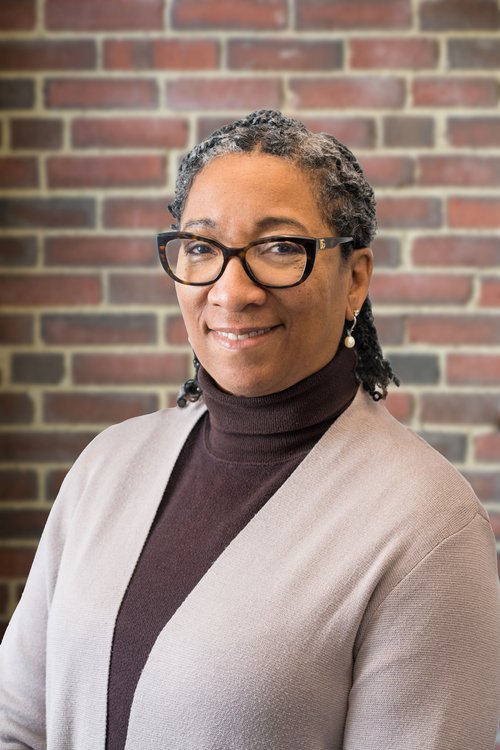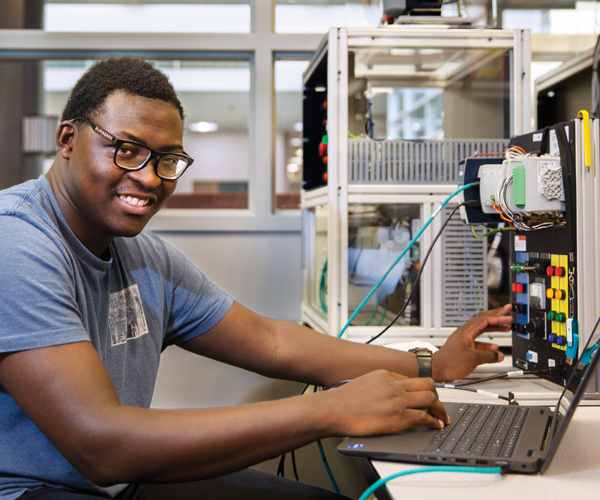College Now Continues Counseling During COVID-19
by Bob Sandrick | Feb. 1, 2021 | 5:00 AM

COVID-19 has sent K-12 education into a tailspin. School districts have struggled to provide a quality education for students while protecting them and their families from the pandemic and controlling virus spread in their communities.
That turbulence also has affected College Now Greater Cleveland, which advises high school and middle school students how to attain and pay for post-secondary education and training. College Now counselors, normally stationed in schools throughout Northeast Ohio, have had to adapt to continually changing learning models, with children switching from in-person classes to at-home learning and combinations of both scenarios.
Fortunately, College Now was ready. The nonprofit was exploring various online formats before COVID-19 hit and has moved entirely to internet-based programming. The change to digital has even led to improved services in some respects, although challenges remain.
On the plus side, online programming has allowed College Now to reach more families at times more convenient for them. However, it’s not always easy gaining the attention of students who have had their fill of online existence.
College Now is still working furiously to adjust.
“We cannot afford to lose kids because of COVID-19,” says Michele Scott Taylor, chief program officer at College Now. “They still need a post-secondary education, whether it’s a four-year or two-year degree or a training certificate. We want people to have dreams and a pathway for reaching them.”
Tameka Pollard, a College Now adviser assigned to Parma Senior High School, says ever-changing learning models in the schools have been challenging in dealing with COVID-19.
“It’s hard planning when you don’t know what’s going to happen next,” Pollard says
Tech & Tone
College Now, the first organization of its kind in the U.S., works annually with about 30,000 students, including adult learners. The nonprofit’s advisers, in preparing students for college, are a help to high school counselors, who have become overloaded with responsibilities.
Many College Now clients are the first in their families to attend college. In normal times, advisers, embedded in more than 80 Northeast Ohio schools, meet with these families in person. They instill a “college-going culture” in them, in addition to guiding their children toward a higher education.
That good work was threatened in March when Gov. Mike DeWine closed all Ohio schools due to COVID-19. Yet, College Now somehow transitioned to all-virtual programming in just a matter of days.
Before anything else, College Now huddled with its staff and advisers. They talked about how to protect themselves from the virus and recognize its symptoms.
“Our staff skews younger, and many times this is their first job,” Taylor says. “So, we wanted to help the broader community by keeping our staff healthy.”
As for technology, College Now had already tapped into Google Classroom to share information with teachers and students and meet with them virtually. However, since not every school district used Classroom, College Now added Microsoft Teams, a similar online platform, to its repertoire. The web services allow College Now to keep students up to date on their college-prep checklists and organize webinars on subjects like how to choose and apply to colleges and find and sign up for financial aid.
Along with technology adjustments, College Now revised its content and message delivery because online webinars aren’t the same as in-person sessions. For example, a webinar presenter needs a co-presenter to pick up the slack if his or her digital device fails.
Meanwhile, a webinar producer reinforces the presenter’s message in the chat section. Polls at the beginning of a presentation pique the interest of attendees and keep them engaged throughout the presentation. Even lighting is an important consideration when setting up a webinar.
College Now was still improving its online delivery in December. It has shortened its presentations, so they don’t lose students’ attention, but that means more presentations. To attract students back again, College Now was considering offering prizes to those who keep attending. Also, it was looking to integrate TikTok, a popular social media platform among young people, into its information delivery system.
Gearing Up
Pollard has always had her hands full, even before COVID-19. She's responsible for providing college-prep services to more than 300 Parma Senior High School students at the Parma site of the Gear Up Ohio program, which is funded through a federal Gear Up grant awarded to the Ohio Department of Higher Education by the U.S. Department of Education. College Now runs Gear Up Ohio programming in Parma and provides statewide technical assistance.
“It was a challenge even before the pandemic just getting students to respond and be engaged,” Pollard says. “A lot of our kids don’t know a lot about college. They might be the first in their families to attend.”
COVID-19 made Pollard’s job even more difficult. A people person, she excels when meeting with students and families face-to-face. When physically in the school, she can track down students and connect with them anywhere in the building.
In the virtual world, the impetus has fallen onto students to connect, and they’re already overwhelmed with online lessons. Some students are struggling academically. Pollard’s emails to them are sometimes lost in the electronic shuffle.
Caitlyn Hardy, 17, a senior at Parma Senior High School and a client of Pollard’s, agrees that COVID-19 and the switch to online learning has impacted students mentally.
“Ever since the start of the school year, students can’t separate work from home because it’s all in one place, with no detachment,” Hardy says. “If you have a bad day, you can’t go home and get away from it because you’re already there.”
To cut down on the number of emails she sends to students, Pollard has communicated with them through Naviance, a college planning software. She also texts reminders to them using Remind, a mobile messaging platform that teachers have also adopted.
Pollard says Gear Up was considering other ways to draw in students. In addition to awarding prizes to students who show up for online programs, Pollard was hoping to start a “table talk” meeting where students can express their feelings and discuss problems.
“We’re trying to find ways to relieve stress and have fun,” Pollard says.
For Hardy, the conversion to virtual education has worked out. Thanks to Pollard, she has applied to several colleges and sought various financial aid packages. And, for the first time in
her academic career, she’s earning straight As.
“The webinars, even after the pandemic, will be good for everyone, teachers and students, because people aren’t going to stop using computers,” Hardy says.
Trending
-
1
-
2
-
3
-
4
-
5










